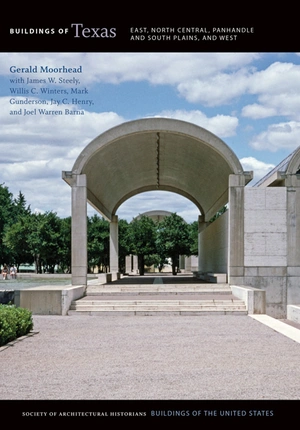
The circular-plan church is faced in white stucco, with circular, semicircular, and rectangular windows. Goss’s decorative language is simple and has aged well. A semicylindrical roof element, cut away in a parabola to frame a narrow metal cross, rises from the roof and forms a light scoop for circular skylights above the dais in the worship space, analogous to Temple Mount Sinai in El Paso (EP40). Its silhouette is memorable and eloquent, like that of a Spanish colonial adobe church. Inside, the liturgical furnishings are round, with parabolic cutouts to form legs. Church buildings face forward onto a wide, ugly parking lot, but Goss used two linear wings to frame a terraced garden to the rear of the site that connects visually with the city’s Civic League Park, to the east. The distinctive circular composition recalls the arrangement used by Goss for the John Glenn Junior High School (SS29). The garden and park are WPA river improvement projects of the late 1930s.














